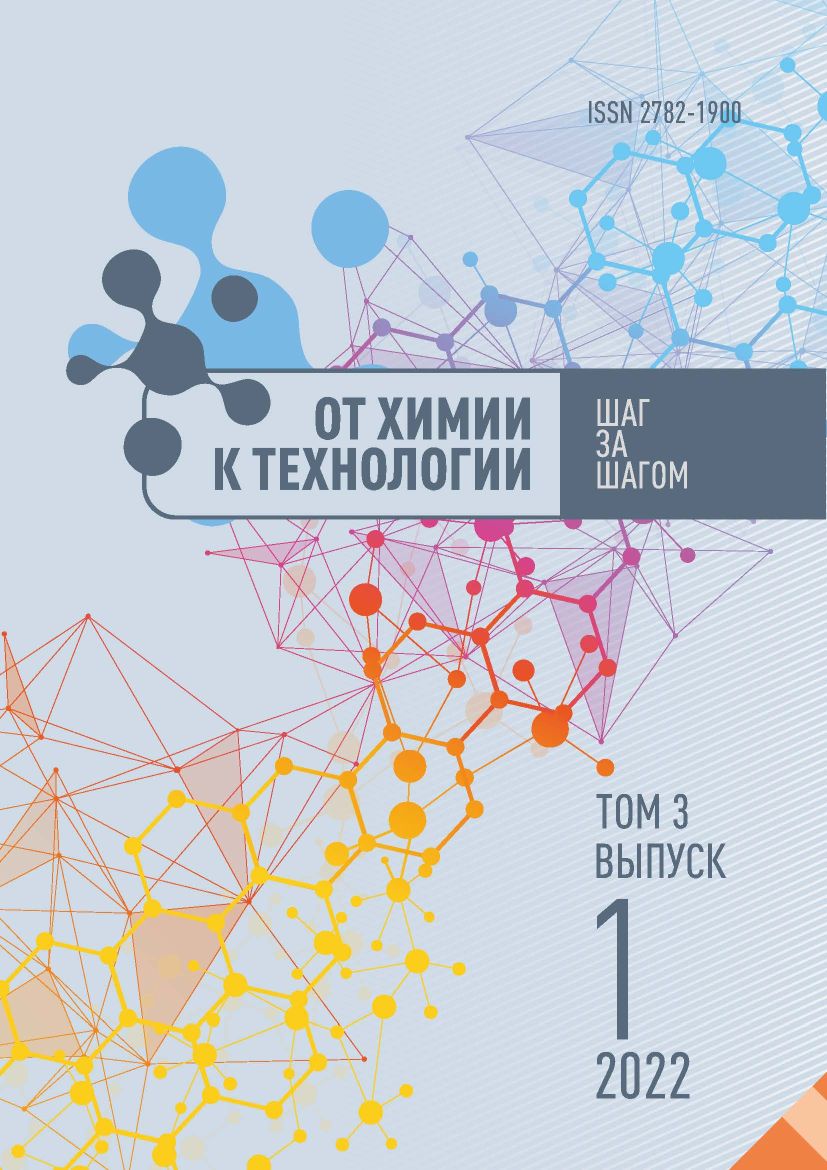Иваново, Ивановская область, Россия
Иваново, Ивановская область, Россия
The paper concerns the sorption of heavy metal ions from aqueous solutions by cellulose sorbents agents. We modified the wood cellulose by polyvinylpyrrolidone and carboxylic acids. Also we studied the equilibrium and kinetics of Cu(II), Co(II) and Ni(II) ions sorption from aqueous solutions by native and modified cellulose samples. We treated the sorption isotherms under study according to Langmuir models and theory for vol-ume filling of micropores. The Langmuir model is the most correct one for description of the process of heavy metal ions sorption by cellulose sorbents agents. According to the study, the maximum sorption capacity of the modified sorbents is 1.5-2 times higher than the maximum sorption capacity of the native cellulose. The samples obtained can be arranged in the following order of increasing ultimate sorption capacity (A∞): native cellulose < polyvinylpyrrolidone-modified pulp < citric acid-modified pulp. In addition, we studied the influence of media acidity on the sorption of heavy metal ions in pH 1-7. We observed a significant increase in the pH of the initial solution from 1 to 6; there is a rapid increase of the degree of extraction of Cu(II), Cu(II) and Ni(II) ions. Experimental-ly we obtained the IR spectra of native wood cellulose and its samples modified by poly-vinylpyrrolidone and citric acid. Also the authors made an elemental analysis of all types of modified sorbents.
cellulose, modification, heavy metal ions, isotherms, sorption kinetics
1. Zhou, Q., Yang, N., Li Y., Ren, B., Ding, X., Bian, H. & Yao, X. (2020) Total concentrations and sources of heavy metal pollution in global river and lake water bodies from 1972 to 2017, Glob. Ecol. Conserv., 22, p. e00925. DOI:https://doi.org/10.1016/j.gecco.2020.e00925.
2. Naushad, Mu. & Lichtfouse, E. (Eds.). (2020) Green Materials for Wastewater Treatment. Springer International Publishing.
3. Huang, Y., Chen, Q., Deng, M., Japenga, J., Li T., Yang, X. & He, Z. (2017) Heavy metal pollution and health risk assessment of agricultural soils in a typical peri-urban area in southeast China, Journal of Environmental Management, (207), pp. 159–168. DOI:https://doi.org/10.1016/j.gexplo.2019.106403.
4. Beni, A.A. & Esmaeili, A. (2019) Biosorption, an efficient method for removing heavy metals from industrial effluents: A. Review, Environmental Technology & Innovation, (17), p. 100503. DOI:https://doi.org/10.1016/j.eti.2019.100503
5. Sankaran, R., Show, P.L., Ooi, C.W., Ling, T.C., Shu-Jen, C., Che, S.Y. & Chang, Y.K. (2020) Feasibility as-sessment of removal of heavy metals and soluble microbial products from aqueous solutions using eggshell wastes, Clean Technol. Environ. Policy, (22), pp. 773-786. DOI:https://doi.org/10.1007/s10098-019-01792-z.
6. Khan, T.A., Chaudhry, S.A. & Ali, I. (2015) Equilibrium uptake, isotherm and kinetic studies of Cd(II) adsorp-tion onto iron oxide activated red mud from aqueous solution, Journal of Molecular Liquids, (202), pp. 165–175. DOIhttps://doi.org/10.1016/j.molliq.2014.12.021.
7. Crini, G. & Lichtfouse, E. (2019) Advantages and disadvantages of techniques used for wastewater treatment, Environmental Chemistry Letters, (17), pp. 145-155. DOI:https://doi.org/10.1007/s10311-018-0785-9ï.
8. Katheresan, V., Kansedo, J. & Lau, S.Y. (2018) Efficiency of various recent wastewater dye removal methods: A. Review, Journal of Environmental Chemical Engineering, (6), pp. 4676–4697. DOI:https://doi.org/10.1016/j.jece.2018.06.060.
9. Shamsollahi, Z. & Partovinia, A. (2019) Recent advances on pollutants removal by rice husk as a bio-based adsorbent: a critical review, Journal of Environmental Management, (246), pp. 314–323. DOI:https://doi.org/10.1016/j.jenvman.2019.05.145.
10. Yadav, S., Yadav, A., Bagotia, N., Sharma, A.K. & Kumar, S. (2021) Adsorptive potential of modified plant-based adsorbents for sequestration of dyes and heavy metals from wastewater, Journal of Water Process Engi-neering, (42), pp. 102148. DOIhttps://doi.org/10.1016/j.jwpe.2021.102148.
11. Ezeonuegbu, B.A., Machido, D.A., Whong, C.M.Z., Japhet, W.S., Alexiou, A., Elazab, S.T., Qusty, N., Yaro, C.A. & Batiha, G.El-S. (2021) Agricultural waste of sugarcane bagasse as efficient adsorbent for lead and nickel removal from untreated wastewater: Biosorption, equilibrium isotherms, kinetics and desorption studies, Bio-technology Reports, (30), p. e00614. DOI:https://doi.org/10.1016/j.btre.2021.e00614.
12. Nikiforova, T.E. & Kozlov, V.A. (2016) Regularities of the effects of the nature of polysaccharide materials on distribution of heavy metal Ions in a heterophase biosorbent–water solution system, Protection of Metals and Physical Chemistry of Surfaces, 52(3), pp. 243–271. DOI:https://doi.org/10.7868/S0044185616030219 (in Russian).
13. Nikiforova, T.E., Kozlov, V.A. & Odintsova, O.I. (2015) Distribution patterns of copper (II) and nickel (II) ions in heterophase system of aqueous solution - modified flax fiber, Russian Chemical Journal, 59(4), pp. 76 84 (in Russian).
14. Losev, N.V., Nikiforova, T.E., Makarova, L.I. & Lipatova, I.M. (2017) The effect of mechanical activation on the structure and sorption activity of chitin, Protection of Metals and Physical Chemistry of Surfaces, 53(5), pp. 480-485. DOI: 10.1134 (in Russian).
15. Meretin, R.N. & Nikiforova, T.E. (2021) Investigation of the reactivity of the surface of a carbon-containing silicate sorbent of plant origin, Izv. vuzov. Khim. i khim. tekhnol., 64(11), pp. 117-125. DOI:https://doi.org/10.6060/ivkkt.20216411.640 (in Russian).
16. Kokotov, Yu.A. & Pasechnik, V.A. (1970) Equilibrium and kinetics of ion exchange. L.: Chemistry (in Russian).
17. Ahnazarova, S.L. & Kafarov, V.V. (1985) Methods of Optimizing Experiments in Chemical Technology. M.: Vysshaya shkola (in Russian).
18. Petrov, I.N. (1996) Organic Chemistry. M.: Nauka (in Russian).
19. Nikitin, N.I. (1962) Chemistry of Wood and Cellulose. M.-L.: Izd-vo RAN (in Russian).







